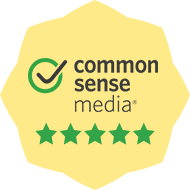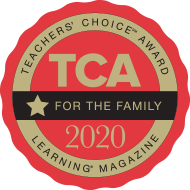Small mirrors are ideal for exploring reflections since they can easily be stored in a backpack or purse, allowing you and your child to play anytime, anywhere, for example, while you're waiting for a bus or at the doctor's office. Other advantages of small mirrors are that they can be easily moved around and pointed at different things.
To start off, spend some time just looking at yourselves in the mirror, discussing the reflections of your faces. Then, move the mirror around. See what happens to your reflections when you move the mirror closer, farther away, and to the side. Then point the mirror at different things. How do you have to hold the mirror to get the best reflection of something? How can you hold the mirror so you see the reflection of something without seeing your own?
On another day, try playing around with a large wall or door mirror. With a large mirror, you can see more of yourself and other parts of the room. (You can even see things that are behind you, a really fascinating concept for children to discover!) How much of the room can you see? What objects in the room can't you see? What happens when you move closer to the mirror? Farther away? What happens when you move to one side of the mirror? Is there a way you can stand so that you can look into the mirror and see the reflections of objects in the room without seeing your own reflection? Make up a game of trying to see each other's reflections without the other person being able to see theirs!
As an extension activity, on a sunny day, go for a walk and look for reflections, such as sunlight reflected in puddles or on windows. How many things can you find that reflect the sun's light? Do those reflections look the same as the ones in the mirror did? What things make the best reflections?

 Español
Español








